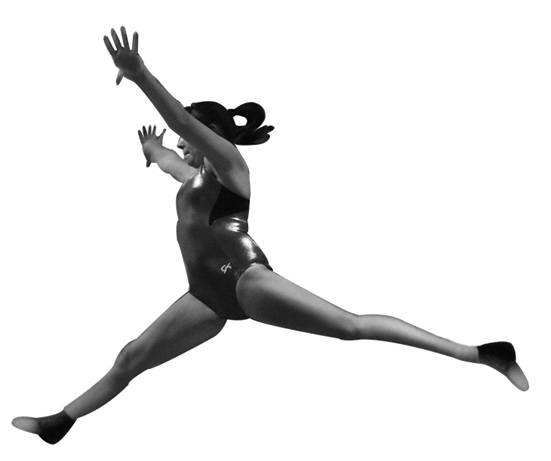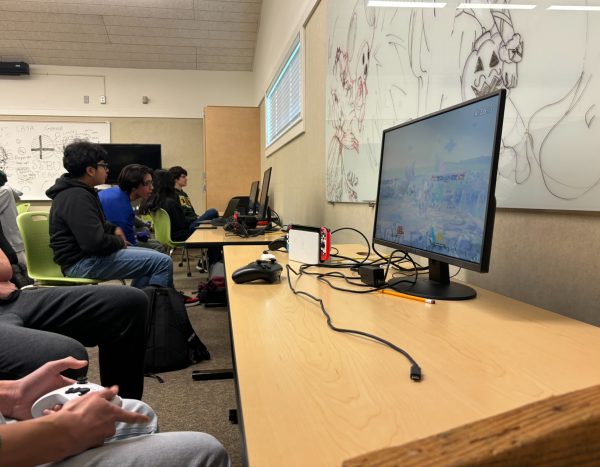On the Flip Side: Gymnastics

There is a chalk shortage in the world. This is the kind of thing that worries only one type of person: a gymnast. Often forgotten amidst the blur of other, more traditional school sports, gymnastics is a sport that requires a unique combination of skill, strength, and sweat. It’s sometimes scoffed at as it it involves skin-tight leotards and glitter, but in reality it demands unforeseen levels of toughness and concentration.
“People don’t understand the wear and tear it takes on your body, the constant pounding, and the necessity of spatial awareness because if you don’t know where you are, you’ll fall flat on your face,” said junior Lindsay Florian.
Junior Alex Green agreed.
“It takes a bigger toll on your body than other sports, and people don’t understand how many hours you have to put in. We go five days a week, four hours a day; so, 20 hours a week,” said Green.
Both level nine gymnasts – the highest level of Junior Olympic gymnastics before college level – the girls have put in more than their fair share of hours toward their sport. More so than a school sport, gymnastics are for only the extremely dedicated. The cycle of a gymnast is school, gym, sleep. Homework, as such, falls to the bottom of the priority list.
“I end up doing my homework in the middle of the night cause there is no other time to do it, and my sleep schedule is off,” said Green.
Florian shared Green’s sentiments, as gymnastics affected her sleep schedule and her ability to do her homework too.
“I would come home from school, take a nap before practice, then go to practice. I wouldn’t get home until 9p.m. Then I would have do homework until the middle of the night. I would always fall asleep, so I had to set tons of alarms at random times to keep me awake,” said Florian.
But this willingness to make sacrifices showcases the seriousness which accompanies a sport like gymnastics; for many young gymnasts who continue competing into their high school years, the aim is to attain a college scholarship for gymnastics. Green spoke of her personal experience in reaching this ultimate goal of a scholarship.
“You have to be really devoted to your sport, and pursue more of it on your free time [as opposed to a school sport]. Our coaches have connections with colleges sometimes, and we go to watch college meets to see how they work and see if we can talk to the coaches. But, people always ask if we’re [other high school gymnasts] going to the Olympics. They don’t understand that we’re just the Junior Olympic level, and they don’t really get the reality of it for us,” said Green.
With this rigorous schedule to meet college-level expectations, overuse injuries are common. The four events (of women’s gymnastics) of vault, floor, uneven bars, and beam each present an opportunity for bodily harm, something Florian can attest to. Three gym-related surgeries later, she is being forced to retire from her beloved sport of 15 years.
“I fractured my foot under my Achilles, got a bone spur, and snapped a tendon in half tearing all the nerves. Gymnastics is crazy dangerous,” said Florian.
Not only is gymnastics dangerous, but it is the sport of a perfectionist. At competitions, gymnasts begin with a perfect score of 10, and are then deducted even quarter-tenths of a point for such small form breaks as a flexed foot or bent knee. This small margin, far from a goal or a three-point shot, can be the deciding factor if a gymnast moves on to a national competition or not. Still, the feeling of sticking a landing or perfecting a skill is enough to keep many people coming back.






